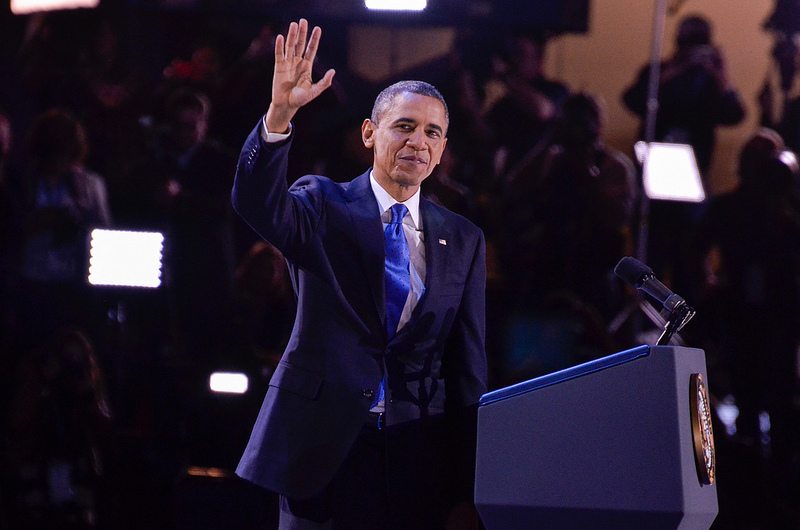Yesterday US President Barack Obama did something no other President has ever done: he introduced rules to force the US to cut emissions from its coal power plants through the EPA Clean Power Plan.
The very next day China covertly announced its own carbon cap though it didnt look especially ambitious. Neither the announcement, nor the lack of ambition, are likely to be a coincidence.
The rules, introduced by the Environmental Protection Agency (EPA), could make a global deal on tackling climate change possible and create a framework for cutting emissions that might be mimicked around the world.
The only problem? If its based on these rules alone, it wont be a very good global deal and it could cause a big fuss within the US.
The best of the press analysis is coveredbrilliantly by the Washington Posts Wonkbook,like our notebook, but wonkier. Here are the key takeaways.
Why it matters?
1) It shows the President can act alone to tackle climate change (kinda)
Obama has made it pretty clear that he sees climate change as a health, environmental, andnational security crisis. Thisis what he claims gives him both a legal and moral right to use federal power to overrule both US states and Congress. That is not normal.
The announcement by the EPA is based on the 1970 Clean Air Act, which gives the President the authority to regulate harmful pollutants. The EPA has carried out studies into why carbon dioxide fits into this category highlighting theimpacts of climate change on health and the environment.
Why does all this matter? Not only is it the only way these rules could be passed, it also means when the President attends an international climate summit to discuss climate change he will be doing so as someone who actually has the authority to implement an international agreement. At least, assuming this authoritysurvives the legal and political onslaught to which it will now be subjected.
2) The EPA has given the world a new way of cutting emissions
The EPA has gone state by state and calculated how much it thinks each state can generate from renewables, save through energy efficiency, and switch from coal to gas. Then, based on that, it has come up with a target for each state.
Each state can adopt the EPAs plan, or it can come up with its own perhaps cooperating with other states. The key is that states have to show their plans will deliver the target, and the EPA has to agree.
The goal isnt just checked at 2030. There is an interim goal that the state must meet on average between 2020 and 2029 to ensure its on course. The plan can be changed of course, but, again, it still has to add up. If it doesnt, the EPA can intervene.
That may sound entirely reasonable, but it is also quite radical. It deals with a massive problem in tackling climate change. How do you remain politically flexible and responsive to local concerns (the coal industry employs thousands, for instance), yet scientifically accurate.
In the rest of the world there are plenty of targets (some of them even semi-binding)but very few actual plans. Its part of why the whole debate over energy and climate change is so confused, with different sides arguing that completely different things, from facking to wind turbines, will do the trick.
The EPA rule, therefore, could have a big impact for other federal systems which need to combine flexibility with a solid plan.
In the EU, there has been fierce resistance to binding targets, amidst a climate policy which suddenly looks confused by comparison to the US and definitely far more reliant on the whims of national governments.
But the plan appeals most directly to China. By talking in terms of carbon intensity (Chinas preferred measure), and by devising a system which allows big variations between regions, the EPA has provided a set-up which looks quite similar to that already emerging in the worlds largest economy, where carbon intensity targets and coal caps are already being introduced at a regional level.
3) Efficiency gets a nod
In calculating how much states could cut their emissions, the EPA included efficiency programs counting each unit of power saved as if it were a unit of clean energy generated.
That instantly puts efficiency investment on a par with clean energy or cutting emissions by switching from coal to gas. As the EPA points out, efficiency is generally the cheapest and most economically beneficial form of investment. It also means that states will have effectively binding targets (once agreed with the EPA) for emissions reductions from efficiency.
Not much of this is happening anywhere else.
Why it doesnt matter
1) It really isnt very ambitious.
Not only are US emissions already down 11% since 2007 (the plan envisages a 30% cut by 2030 on 2005), but lots of coal plants are already set to close in the US thanks to existing EPA rules on harmful pollutants such as Mercury (see map).
The average age of a coal plant in the US is 42 years. That means that many would have to close under almost any circumstance. At the same time the EPA notes that 47 states already have energy efficiency programs, and 38 states have renewables portfolios or goals.
The plan, in some cases, requires very little of states beyond what they are already doing. In fact, it is sometimes less than they are already doing.
California, for example is targeting33% renewable energy by 2020. Its utilities already provide 19.8% of state power renewably.
Yet theplan, in working out how much Californiashould reduce its emissions, appears to assume it only reaches 21%, a decade later.
That could mean neighboring states will be able to join up with California to propose a plan to the EPA, reducing the need for any of them to do anything different to what they already had in mind.
2) Itll be really hard to enforce
The EPAs authority to enforce this rule is set to be tested in court by the coal lobby which isalready suing the administration over its efforts to enforce rules on mercury and other pollutants.
Even if the EPA succeeds in getting its plan up and running, it is expected to face a struggle implementing at a state level. The agency can refuse to allow new plants to be built, it even demand old ones are shut down, and it can force plans to cut emissions on states which refuse to develop adequate ones.
What the agency cannot do is fund the measures. This is awkward, not only because it limits the options for investment but also because in most US states, state legislatures have some control over the prices utilities can charge for power. That includes investors in clean energy.
It is possible to imagine a standoff between the EPA and states with blackouts, not clean energy, as the result. Here is Fox news saying just that.Ultimately Obamas move to bypass Congress doesnt end the battle over executive versus legislative power over climate change (and just about everything else), it simply moves it to a state level.
All of which means this isnt even the most ambitious thing the EPA is doing to cut emissions.
The Washington Post has worked out the agency’s previous efforts to impose thefirst-ever carbon limits on passenger cars and light truckswill do more by a hair to addressclimate change.
By 2030, according to EPA estimates, the new power plant proposal will cut 550 million metric tons of annual carbon dioxide emissions. The fuel efficiency standards for passenger cars and light trucks for the fleet years between 2012 and 2025 will cut 580 million metric tons by that same year. Its funny, nobody seems to get all that excited about car standards.
This post originally appeared on Greenpeace UK’s EnergyDesk blog.





